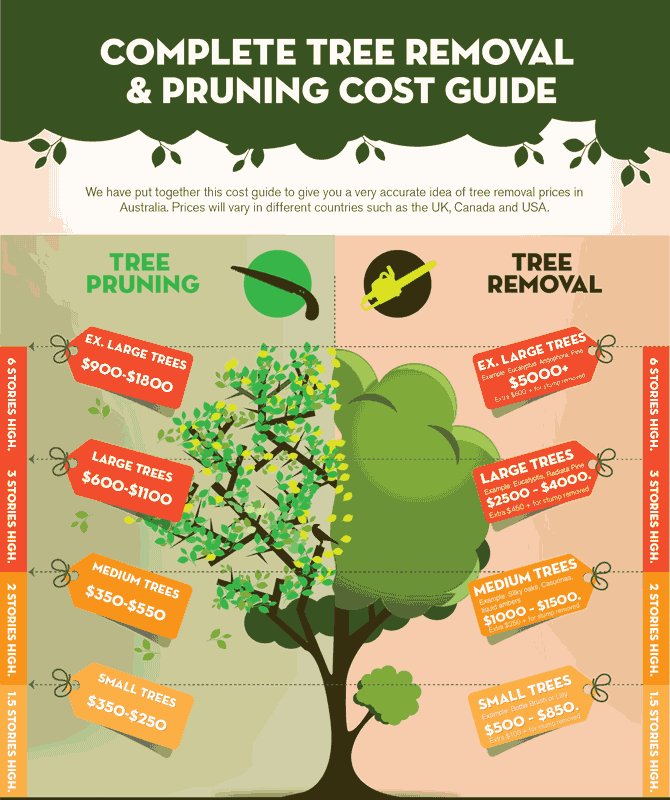Tree Care Throughout The Seasons: Best Practices For Taking Care Of Trees Prior To And Adhering To Elimination
Tree Care Throughout The Seasons: Best Practices For Taking Care Of Trees Prior To And Adhering To Elimination
Blog Article
Created By-
When it comes to seasonal tree treatment, guaranteeing correct management before and after elimination can considerably affect the health and wellness and aesthetic appeals of your landscape. By recognizing the required steps involved in assessing tree wellness and planning for removal, you can proactively secure your building. However what regarding the critical practices to adhere to as soon as the tree is gone? Remain tuned to find the important post-removal treatment procedures that will assist you grow a thriving and lasting setting for your trees.
Pre-Removal Tree Treatment
Prior to dealing with the elimination of a tree, it's vital to prioritize pre-removal tree care. Begin by evaluating the tree's wellness and structural integrity. Look for indications of condition, parasite invasions, or any kind of structural problems that might position a safety danger throughout removal. It's necessary to seek advice from a qualified arborist to establish the most effective strategy.
Pruning dead or diseased branches can avoid further damages to the tree and ensure a smoother removal procedure.
Additionally, take into consideration the environmental influence of removing the tree. Trees play an essential duty in our ecological community, so growing a new tree in a suitable area can help counter any loss. Guarantee that you have the needed permits and approvals for tree removal, specifically if the tree is shielded by local laws.
Seasonal Maintenance Tips
Analyzing your tree's needs throughout the year is crucial for its health and longevity. To keep your trees in leading condition, follow these seasonal upkeep tips.
In springtime, concentrate on trimming to remove dead or broken branches and urge brand-new development.
Summer requires regular watering, particularly during droughts, to guarantee your tree remains hydrated.
As loss approaches, keep an eye out for very early indications of disease or anxiety, and take into consideration applying mulch to shield the origins throughout wintertime.
In winter months, be cautious when getting rid of snow from branches to stop damage, and continue to monitor your tree's total wellness.
Bear in mind to change your treatment regular based upon the details requirements of your tree species and regional environment. By staying alert and aggressive throughout the seasons, you can help your trees prosper and grow for many years to come.
Post-Removal Tree Care
To ensure the health of your landscape also after tree elimination, correct post-removal treatment is essential. After a tree is gotten rid of, it's essential to load the continuing to be opening with topsoil and portable it to stop settling. This will help preserve the honesty of the ground and stop potential hazards in the future.
Consider planting brand-new plant life instead of the gotten rid of tree to restore the equilibrium and looks of your landscape. On a regular basis water the location to advertise the development of brand-new plants and protect against soil erosion.
Evaluate the bordering trees for any indicators of disease or tension that might have been caused by the gotten rid of tree. Watch out for tree trimming and removal services that could've been drawn in to the previous tree and take safety nets to protect the remaining plant life.
If required, consult with an expert arborist to examine the influence of the elimination on the surrounding trees and figure out any type of additional treatment needed. By complying with these post-removal treatment steps, you can ensure the ongoing health and appeal of your landscape.
Conclusion
Finally, proactive seasonal tree care is vital for maintaining the health and equilibrium of your landscape. By examining look at this site , trimming, and seeking advice from an arborist prior to removal, you can make certain a safe procedure. After removal, filling the hole, growing new vegetation, and normal watering will promote new growth and prevent disintegration. Remember to inspect bordering trees for disease and look for further treatment steps from an arborist to keep your landscape growing.
